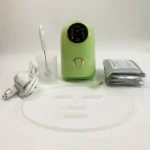

A succulent, Aloe Vera has been used for centuries as a natural remedy for sunburns, rashes, and eczema. Aloe Vera is a plant composed of water-based gel, latex, and a protective outer layer. In its long, thick leaves, there is a clear gel filled with enzymes, vitamins, minerals, and amino acids that can help your skin.
Usually, people use the plant or creams and gels made from it to heal sunburns. In addition to cooling and soothing inflamed skin, Aloe Vera has also been used in skincare products for its moisturizing properties. Besides treating skin problems, Aloe Vera gel can also prevent wrinkles.
Is Aloe Vera Gel safe to use around the eyes, and does it have any particular benefits? There is no doubt that the answer is YES.
To find out how Aloe Vera Gel can help your eye area’s skin, read on to learn more.
Aloe Vera improves the Appearance of Dark Circles
Dark circles are caused by darker skin under the eyes. Usually, dark circles are not indicative of any medical problems. A lack of sleep or tiredness is often blamed for dark circles. It is also possible that other factors contribute to their occurrence, such as:
Age: As we age, the skin around our eyes thins. This leads to the under-eye area becoming darker because the blood vessels are more visible.
Allergies: As a result of an allergic reaction, the body releases histamine, which causes the blood vessels to dilate and become more visible.
Dehydration: It is very easy to become dehydrated under the eyes. You’ll notice thinner, duller skin under your eyes when you’re dehydrated.
Excessive sun exposure: Sunlight exposure can lead to the overproduction of melanin, the complex polymer responsible for pigmentation in the skin and hair. In the under-eye area, hyperpigmentation can be caused by too much melanin.
Genetics: there is a possibility that dark circles are inherited.
Strain: watching television or a computer screen for long periods of time can cause eyestrain. A large number of blood vessels can expand and become more prominent around the eyes as a result of the results.
Using Aloe Vera Gel under the eyes can help lighten pigmentation and discolouration. In order to counteract the symptoms of dehydration, it keeps your skin supple and moisturized. A study also showed that Aloe Vera gel might reduce facial wrinkles, increase hyaluronic acid and collagen production, and improve skin elasticity.


Redness or irritation can be relieved with Aloe Vera
Sun exposure, medications, dehydration, and even daily cleansing can irritate the delicate skin around the eyes.
The enzymes and fatty acids in Aloe Vera gel help reduce inflammation and redness. In addition to its anti-fungal, antibacterial, and anti-inflammatory properties, Aloe Vera helps soothe the affected area, heal the skin, and prevent infections. Aloe Vera can temporarily relieve skin inflammation, so keep this in mind when using it.
The symptoms should be evaluated and treated by a professional medical professional if they last longer than a few days.
Swelling and puffiness can be relieved by Aloe Vera
In the morning, puffiness around the eyes is caused by an accumulation of fluid. Salt consumption, stress, dehydration, fatigue, and allergies are some of the typical causes. Even tiny amounts of fluid can cause noticeable swelling due to the thin skin in this area.
As an antioxidant, Aloe Vera is highly effective in reducing swelling or puffiness around the eyes. There are minerals in Aloe Vera that help strengthen the skin and repair damaged cells, including magnesium, potassium, selenium, and zinc.
Dry or flaky skin can be moisturized with Aloe Vera
Around the eyes, it is common to experience dryness. It is difficult to resist scratching at dry skin – which can cause more serious problems. Aloe Vera contains water and enzymes that moisturize the skin and reduce itching and flaking.
Zinc content in the plant helps tighten pores, while amino acids keep skin soft. Under the eyes, milia or little white bumps are usually caused by excess keratin trapped beneath the surface of the skin.
Those unsightly bumps can be eliminated by Aloe Vera’s exfoliating properties.
What are the benefits of Aloe Vera for dry eyes?
The 2012 study showed that filtered Aloe Vera extract may have properties that may reduce inflammation and dryness in the eyes.
At low concentrations, Aloe Vera did not appear to negatively affect eye cells, according to the study. Aloe Vera gel shouldn’t be applied directly to the eyes. As a result, you may experience burning, irritation, redness, and other side effects. Aloe Vera eyedrops need more research before they can be considered safe.
Currently, Fresh Aloe Vera Gel should only be used on the skin and not directly on the eyes. Using Aloe Vera Leaf gel on the outside of your eyelids for the relief of redness or swelling is safe. Make sure you don’t get any gel in your eyes or too close to your eyelid edge. Apply a small amount of Aloe Vera Gel to your eyelids and avoid rubbing them.
Fresh Aloe Vera leaf gel for eyes: how to use it?
Wash the leaf first and cut off the base and tip of the leaf.
You can remove aloin – yellow sap by placing your Aloe Vera leaf, cut side down, in a cup and letting it drain for 10-15 minutes. Aloin or latex should be avoided.
The yellow juice (Aloe latex) that is found between the outer bark and the inner fillet of Aloe Vera leaves is a natural laxative.
Constipation may be relieved by latex because it contains natural laxatives called anthraquinones. The use of aloin is not recommended.
Cut a large Aloe Vera leaf in half. Use a sharp knife to carefully remove removing the green part (skin of the leaf).
Obtain the inner jelly – Aloe Vera gel.
Wash with plenty of water and soak for 6 to 12 hours to remove the rest of the aloin – a yellow sap.
How to extract properly the gel from the inside as described in the post THE PROPER WAY OF HOW TO EXTRACT FRESH ALOE VERA GEL FROM THE LEAF!
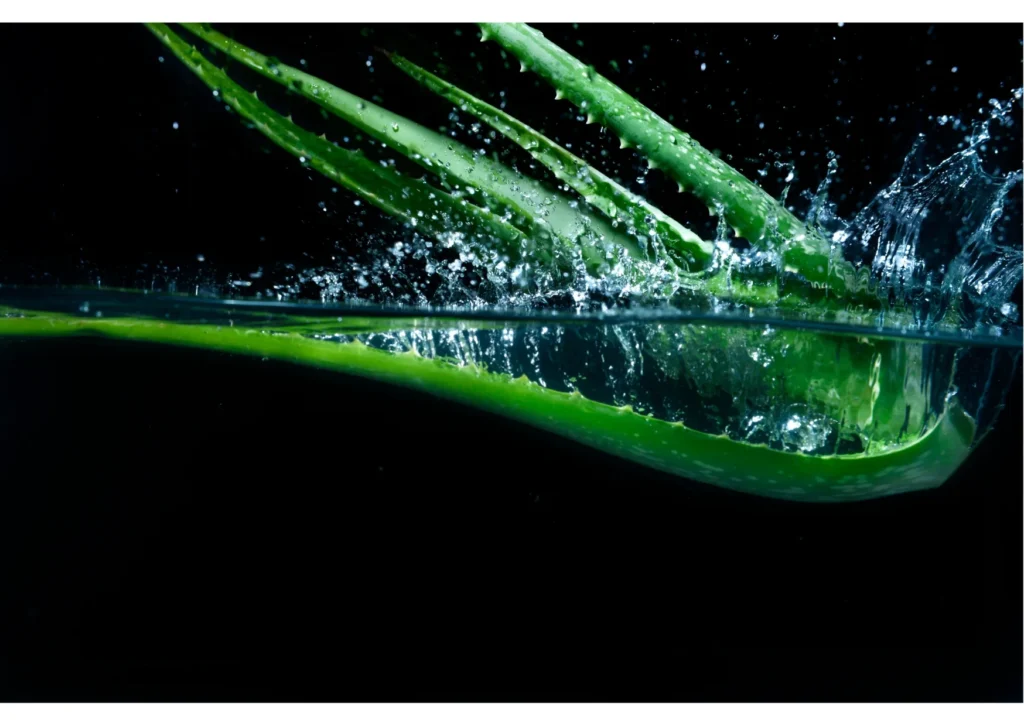

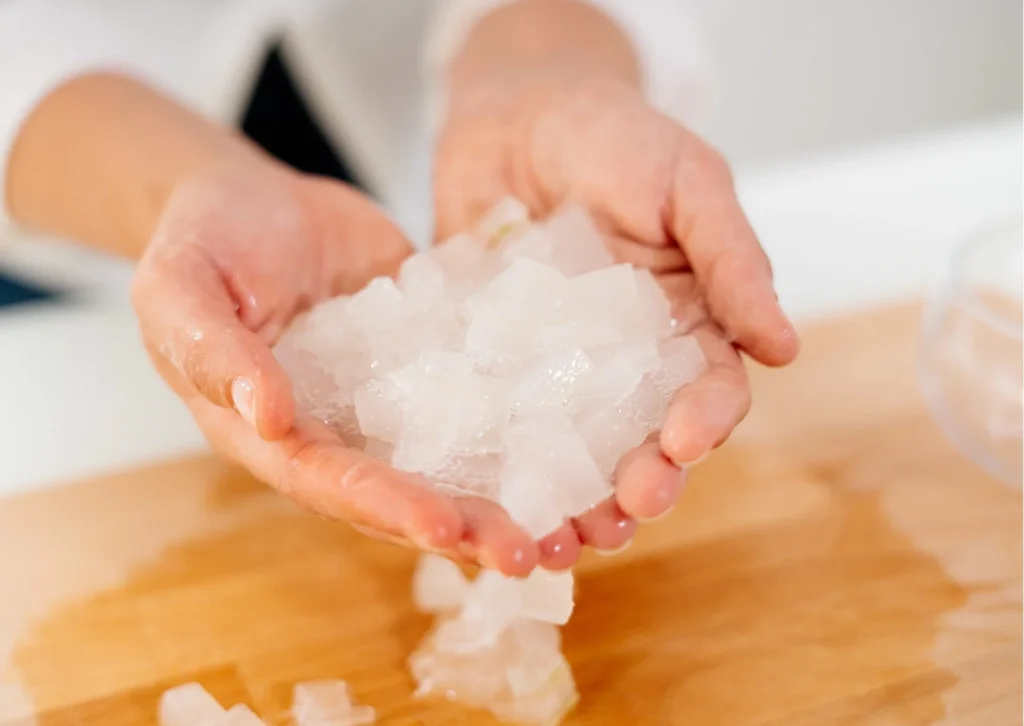





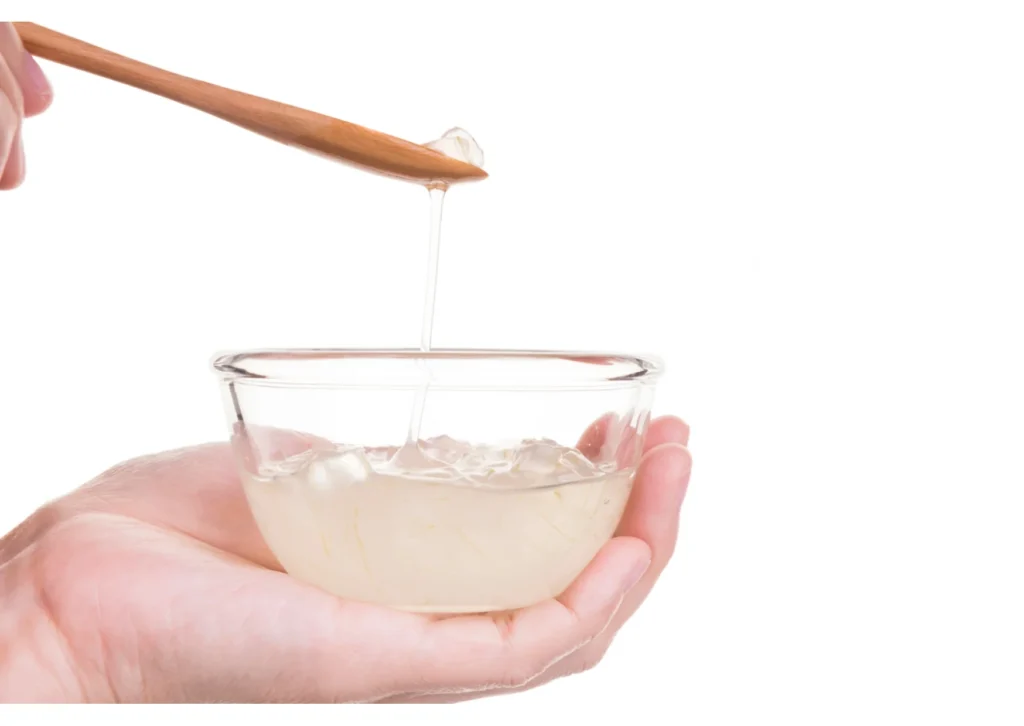

Treats sunburn, inflammation, redness, and dryness around the eyes
Wash your face gently with water and a mild cleanser.
When your skin is dry, lightly dab a small amount of Aloe Vera gel onto the affected area.
Do not rub the Aloe Vera gel into your skin (like lotion) or get it too close to your eyes.
Once the gel has been applied for 10 to 15 minutes, wash it off.
Sunburns, inflammation, and dry skin can be treated with Aloe Vera up to three times a day.
Using Aloe Vera too frequently can dry out your skin, so use it less often if you notice dryness.


Applied as a moisturizer
- Use a mild cleanser and water to wash your face.
- Apply Aloe Vera in a thin layer to the skin around your eyes once it has dried.
- Aloe Vera can be applied to specific areas of your face where you notice dryness or wrinkles, or it can also be applied to your entire face.
To use Aloe Vera gel as a moisturizer, let it absorb into your skin.
Aloe Vera should be used slowly if you don’t know how it will affect your skin. Once a week, replace your usual moisturizer with Aloe Vera, then increase your use of Aloe Vera.
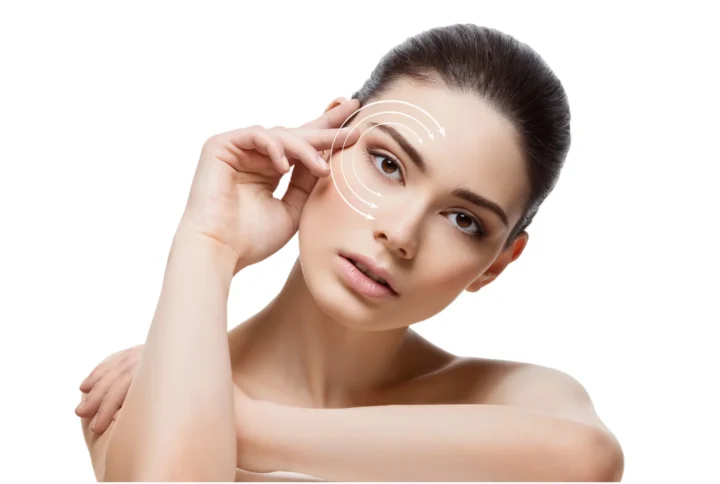

How to safely use Aloe Vera
Although Aloe Vera is generally safe to use on your skin, avoid getting it in your eyes. When applying Aloe Vera to your skin, avoid rubbing too close to your eyes. Aloe Vera can cause pain if it gets into them. If this occurs, gently run cool water over your eye for about 15 minutes. Don’t wait until your eye is dry before rinsing it out. You should open and close your eyes often while the water cleans them. Rest until your eye feels and looks better after doing this.
Despite its ability to moisturize your skin, Aloe Vera may cause it to dry out when used excessively. It works as an exfoliator thanks to its enzymes. Exfoliating too much can cause your skin to dry out or become too oily, depending on your skin type.
Before applying Aloe Vera to your face, you should do a patch test if you have never used it before. If you have an allergy to garlic or onions, this is especially important. An Aloe Vera patch test can be done by applying a small amount to your wrist or elbow. Itching, swelling, redness, or burning may occur within a few hours if you are sensitive to the gel. Unless you have a reaction, you should be able to use it safely. Sensitive skin can cause this, but it is uncommon.
You may absorb more steroid cream if you use steroid creams alongside Aloe Vera, such as hydrocortisone. If you’re using a steroid cream, check with your doctor if you can apply Aloe Vera to the same area.

